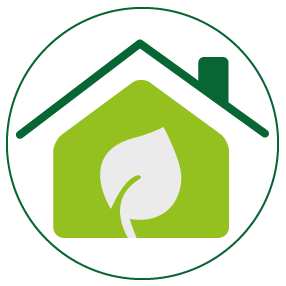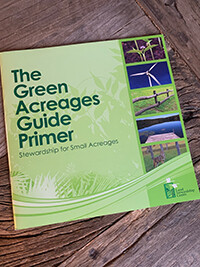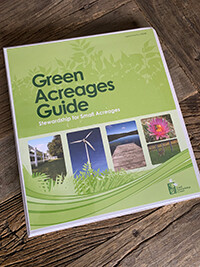Healthy acreages, healthy communities

Ownership of small acreages, hobby farms and recreational properties is growing in Alberta. More and more, acreage owners are searching for information and support for how best to manage their properties in a sustainable manner.
The Green Acreages program offers publications, workshops and incentives developed especially for acreage, hobby farm and recreational property owners to help them implement stewardship practices that conserve and protect the valuable natural assets, such as air, land, water, wildlife, associated with their properties. Learn more, watch this.
Your trusted source for information and resources that help you manage your land.
The Primer

This booklet provides an introduction to the basics of owning and managing a rural property on topics such as water and waste management, living with wildlife, weed and pest control and much more. With funding support from TD Friends of the Environment and Alberta Real Estate Foundation, we updated the Primer to include additional resources as well as new content about Resource Development and Extraction and Easements and Rights-of-Way. View the flipbook online or download the PDF. Print copies are also available for municipalities and stewardship groups through our online store.
The Workbook

The more comprehensive Workbook takes stewardship to the next level. Each chapter begins with an overview of an issue and background information, includes relevant legislation, offers examples of beneficial management practices and provides sources of additional information. At the end of each module, handy worksheets help you document and evaluate how you manage your property. These workbooks are currently made available to people attending municipally-hosted Green Acreages workshops. The Green Acreages guide is available for purchase in our online store.
Project Funding
With funding from Alberta’s Watershed Resiliency and Restoration Program and support from rural municipalities, we’ve expanded the Green Acreages program and are now accepting applications from small acreage, hobby farm and recreational property owners to fund cost-shared, eligible stewardship initiatives on their properties.
Through this funding initiative, eligible projects will be funded on a 25-75 cost-share basis up to a maximum of $4500 per project against cash expenditures with receipts. Property owners must contribute 25% of the total project cost in cash or in-kind value. Applicants are welcome to seek funding from other sources/other grants but cannot not apply for the Beaver Hills Biosphere Rural Residential Stewardship Program funding for the same project.
Applications for 2025 project funding are currently closed.
Connect with the program manager, Milena McWatt by email or phone 780–483-1885 extension 222 if you have any questions.
Workshops
Green Acreages Workshops are informative, educational and interactive. Hosted in partnership with local municipalities, and led by an experienced and knowledgeable facilitator, these workshops offer a practical, hands-on approach to helping people become better stewards of their acreages and recreational properties.
Using the Workbook and its corresponding worksheets as a guide, and using an air photo of individuals’ properties provided by their municipality, by the end of a workshop, each attendee will have learned more about what they can do and the resources available to them, and come away with a Workbook and the start of a stewardship plan for their property. At a workshop, you will learn how to:
- Better manage and improve your property
- Evaluate your acreage
- Map your property assets and plan your activities
- Access funding to help with a stewardship project and the projects that qualify
- And more
Are you a municipality interested in hosting a Green Acreages workshop for your residents? Contact the Conservation and Stewardship Program Manager today.
2025 In-Person Workshops
If you are a property owner in one of the host municipalities, join us at one of these upcoming in-person Green Acreages workshops:
- September 25 hosted by Foothills County
- October 1 hosted by Northern Sunrise County
- October 2 hosted by County of Grande Prairie
2025 Virtual Webinars
Green Acreages has expanded its program offering to include webinars on topics including FireSmart, working with beavers, how to support biodiversity on your acreage and more. They are open to any acreage, hobby farm or recreational property owners across Alberta.
More webinars are coming this year. Keep checking back.
A Green Acreages Experience
Hear from Hayley Rothenberg as she shares her experiences with the Green Acreages program and tells the story of the stewardship journey she embarked on with her rural property in Lac Ste. Anne County, Alberta. With background and commentary from Milena McWatt, Land Stewardship Centre's Conservation and Stewardship Program Manager and Lac Ste. Anne County's Lorraine Taylor.

